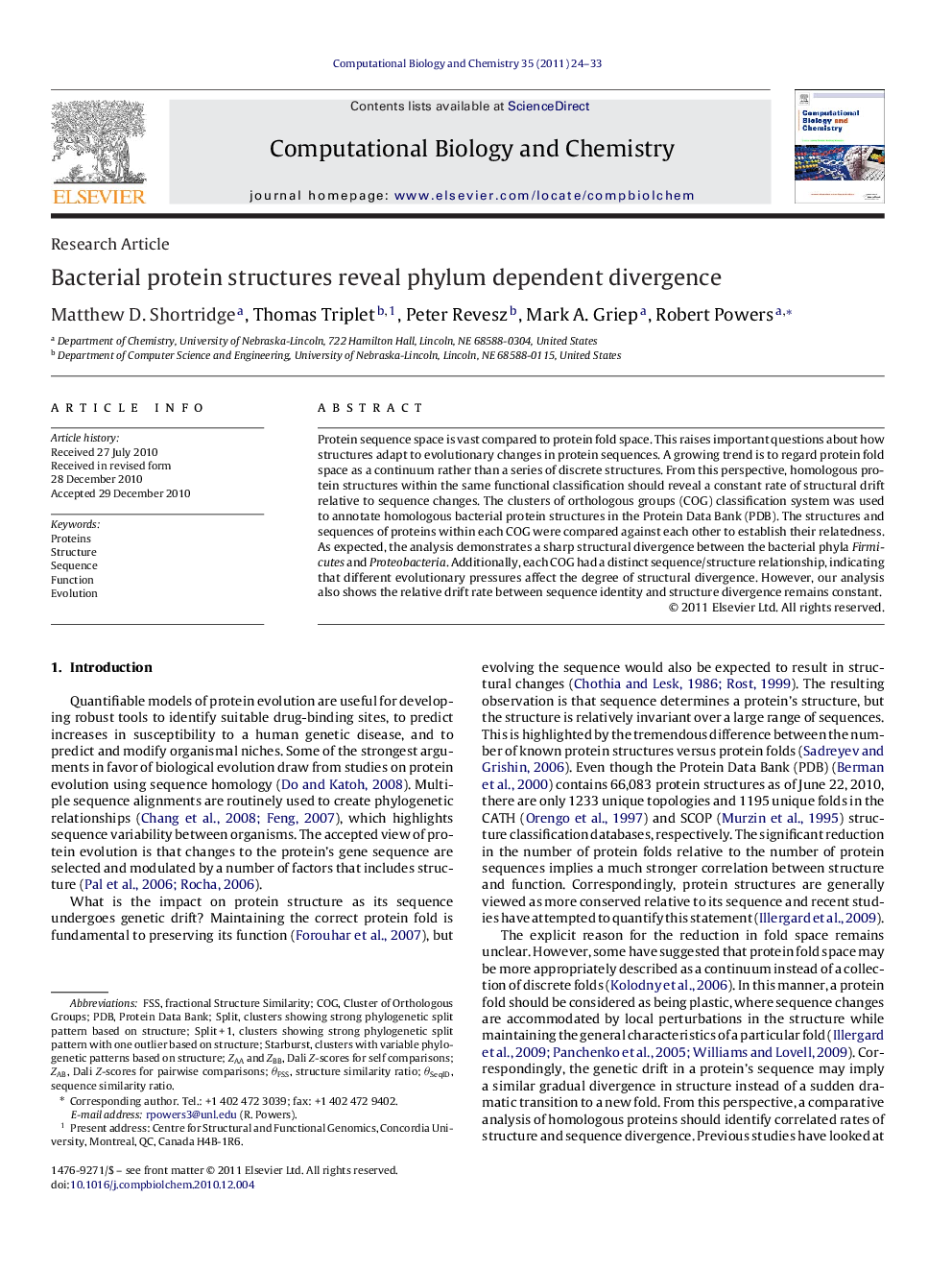| Article ID | Journal | Published Year | Pages | File Type |
|---|---|---|---|---|
| 15263 | Computational Biology and Chemistry | 2011 | 10 Pages |
Protein sequence space is vast compared to protein fold space. This raises important questions about how structures adapt to evolutionary changes in protein sequences. A growing trend is to regard protein fold space as a continuum rather than a series of discrete structures. From this perspective, homologous protein structures within the same functional classification should reveal a constant rate of structural drift relative to sequence changes. The clusters of orthologous groups (COG) classification system was used to annotate homologous bacterial protein structures in the Protein Data Bank (PDB). The structures and sequences of proteins within each COG were compared against each other to establish their relatedness. As expected, the analysis demonstrates a sharp structural divergence between the bacterial phyla Firmicutes and Proteobacteria. Additionally, each COG had a distinct sequence/structure relationship, indicating that different evolutionary pressures affect the degree of structural divergence. However, our analysis also shows the relative drift rate between sequence identity and structure divergence remains constant.
Graphical abstractFigure optionsDownload full-size imageDownload as PowerPoint slideResearch highlights► We compared protein structures within functional classes and across phyla. ► Homologous protein structures were shown to diverge at the phyla level. ► Structural drift consistent with ancient split between Firmicutes and Proteobacteria. ► Protein structures change half as fast as sequence across phyla. ► There is a functional dependency for structure-based of phylogenetic trees.
